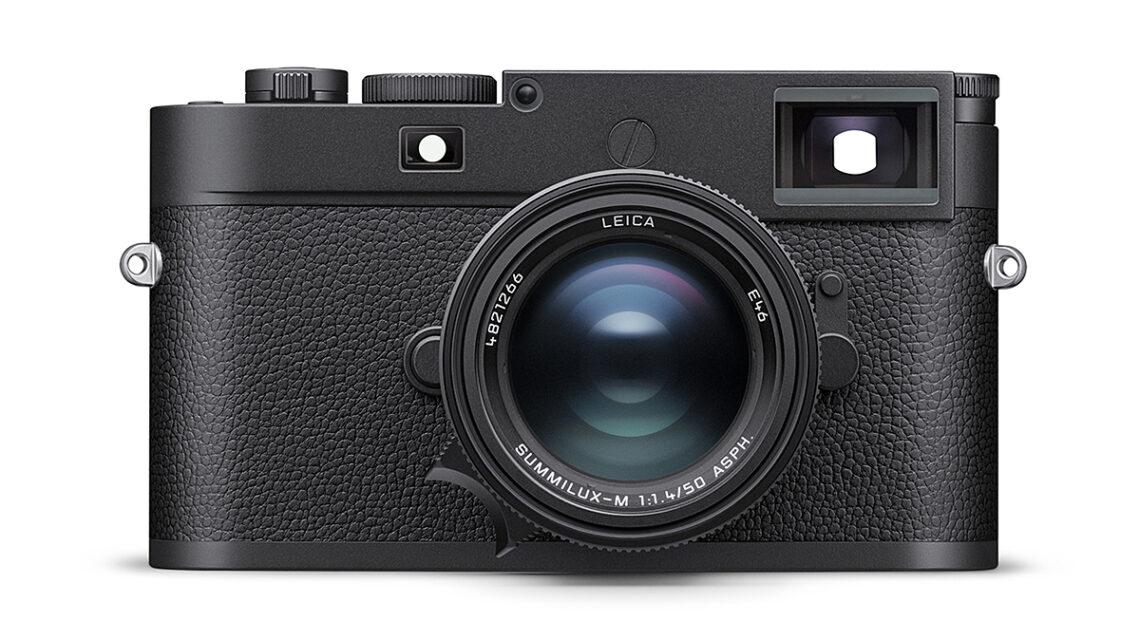
Leica M11 Monochrom Review
Why Black & White?
Photographing in Black & White or mono or greyscale or whatever you want to call it requires you to think differently than when photographing in colour.
With a film camera, you can switch to B&W from colour and vice versa ad infinitum: the operation remains unchanged, allowing you to become accustomed to the camera and “see” either in light and shadows or in colour.
In that respect, a modern digital colour camera echoes its predecessor, allowing you to choose between B&W and colour at will. However, a dedicated B&W camera like the Leica M11 Monochrom doesn’t; you’re forced to think in terms of light and shadows, which can be useful if you can’t switch mentally between the two different disciplines required.
In theory, without a colour filter array (CFA), there are technical benefits as well, including lower noise at a typically higher base (ISO 125 on the Leica M11 M, instead of ISO 64 on the standard M11) and better high ISO performance. An increase in spatial resolution is another.
However, some protagonists say that B&W has had its day: it’s no longer used by photojournalists or even the press in general, so it belongs to the past. I don’t believe that to be the case. If anything, B&W has a timeless quality.
What’s new in the Leica M11 Monochrom?
The Leica M11 Monochrom is based on the standard colour Leica M11 and thus features all of the benefits of that camera, including the full-frame 60 MP BSI CMOS sans CFA, of course. There’s also the larger and more rugged rangefinder inherited from the Leica M10, which is said to require less maintenance (recalibration) than that of the rangefinder in Leica M/M-P (and its variants). The M11 M also has the same body dimensions as the M10/M11 that follow the later film-based cameras such as the Leica M6 TTL, M7, and MP.
The M11 Mono also inherits several small but highly effective refinements from the Leica M11 colour model. First, the M11 Mono has a top plate of aluminium, first introduced with the Leica M (Typ 262 derivative) and subsequently on the Leica M11 black body. The removable brass bottom plate has also been replaced with a fixed aluminium plate and adopts the lever-release mechanism of the Leica Q and SL for the battery. However, unlike those two models, this new battery isn’t compatible with them.
Battery life appears to be good and improved over the Leica M, which in turn was longer-lasting than the M1o. I don’t shoot heavily, coming from a film background, and it’s difficult to tell while testing, as there’s a lot of use that wouldn’t be deemed typical. Nevertheless, it appears Leica has improved the battery life, both in use generally and in reducing battery drain when stored in-camera.
With the battery removed, a single SD (Type I/II) card slot is revealed. There’s only room for one card, but the inclusion of 256 GB of internal memory (up from 64GB in the M11) is very welcome and something we’ll likely see in the Leica M11P. While not a dealbreaker, removing the battery to get at the SD card takes some getting used to, especially in the field. It’s a better solution than removing the bottom plate, but still a shame there isn’t space in the body to offer a separate SD card slot like that on the Leica Q2/3. However, most options for saving files between the SD and internal memory are available, including using the latter as an overflow.
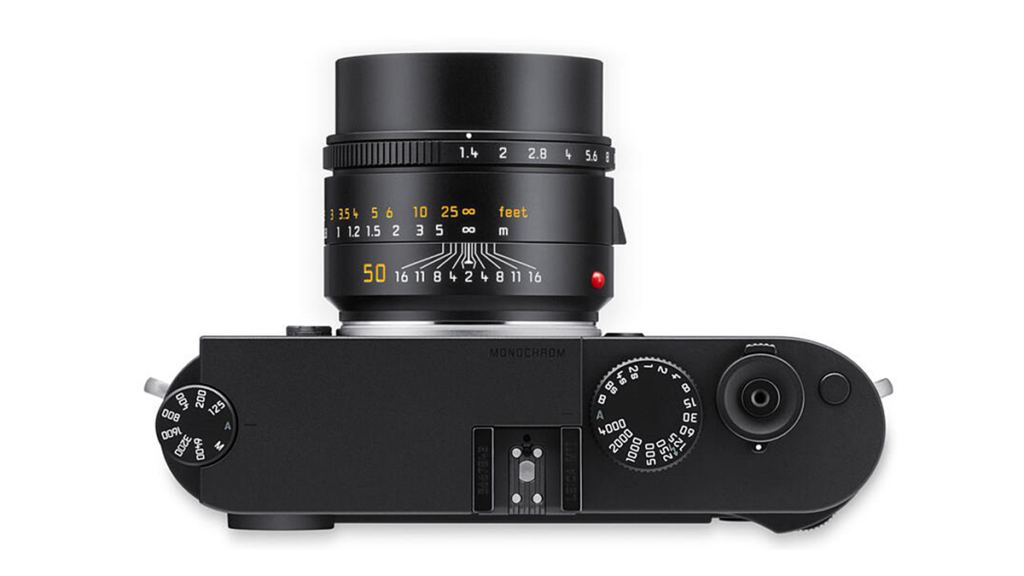
The M11 Monochrom I had for review, courtesy of Leica UK, features the same matte black finish as the standard M11, which is said to be a highly durable finish and similar to that of the ‘Reporter’ models. The switch from brass to aluminium might be considered another odd choice, but the matte finish is attractive and even adds to the overall stealthy nature of the camera, plus there’s no red dot on the Monochrom models.
Leica M11 Monochrom controls and layout
The control layout and operation are identical to the Leica M11, which you can read about in my views here. Overall, the M series continues to go from strength to strength. A particular highlight is the operation of the FN button on the rear, the rear control wheel/command dial, and the small button on the top plate, next to the shutter release. All three work in the same way and offer short-cut access to the same often-used functions, which greatly aids handling and avoids the deep dive into the main menu.
A quick press of any of these allows direct access to one of several features. For example, you can select a feature you’re likely to want to change on the fly, such as the RAW resolution (which offers a choice of 60, 36 or 18.5 MP) on one and have say ISO selection, which includes Auto ISO on/off set on the second button.
What’s inspiring in its design, though, is that a long-press on any one of the three controls gives direct access to a list of some 20-plus functions, which you can select from and move between quite fluidly depending on the task at hand. If you’re already set on the RAW resolution, say on the rear FN button and don’t want to alter what’s set to the other two, and want to take advantage of say, switching between the mechanical and electronic shutter then, after the long press, you can simply select that function instead.
The shortcut option reveals one slight shortcoming that would be useful to address. I use the User Profile modes for different situations (and sometimes share cameras with my partner) and adopt the FN button to choose between them. However, switching from one to the other clears any subsequent adjustment; in effect, resetting to those originally saved settings. While that makes sense initially, would it not be possible to say adopt one short press to switch without clearing them and use a long press to recall the original saved settings? Simpler still would be to omit the saved settings feature and for the camera to remember settings as they’re made. Failing that, perhaps it’s an idea to save the settings manually before you switch user profiles, but that’s another step, of course.
The new evaluative exposure system is better at handling strongly backlit scenes than previous M’s, but it’s not foolproof by any means, and dialling exposure compensation is still necessary if using the Aperture Priority mode. While I usually work in manual mode, when switching to semi-auto on occasion, I set the rear dial to access exposure compensation. This allows direct adjustment without having to select the option first, of course, and it’s intuitive too.
The new viewfinder and larger eyepiece (from the M10) are beneficial to eyeglass users like me, and overall, the handling is incredibly slick. With most, if not all, the “quirks” of the earlier models having been removed, it’s difficult to see how the Leica M11/M11 Mono can be improved a great deal, on a hardware level at least. While I would like an EVF-based Leica M in theory (opening up the framing for all of the M lenses without using an optional finder), if that meant the rangefinder version was only available as a collectable limited version, I wouldn’t be so keen. I suppose, like most modern cameras, improvements will be made on the software side.
The lens supplied for testing was the new 2023 Leica Summilux-M 50mm F1.4 ASPH close-focus model, which I should mention here (there are a few further thoughts mentioned here). When mounted on the Leica M11 M, it looks quite a lot stubbier than the version it replaces, but I always felt that model looked long and narrow (which was made to look even more so when the hood was extended). In my view (and you are free to differ), the wider body improves the focusing experience. Part of this, you might say, is because there’s no longer a (serrated) focusing grip on the edge of the ring on the new model – there’s just a focus tab, but I always felt I was pinching the grip on the older model and resorted to the tab anyway. Now, somewhat at odds with the design, I found I gripped the wider focusing ring instead, or switched between it and the tab when I felt the need.
Optically, there are some minor differences in construction (more to do with edge profiles of some of the elements), but it has a familiar-looking rendering with somewhat ‘swirly’ out-of-focus backgrounds. Like its predecessor, it has very good central sharpness at wide apertures, leading to excellent sharpness when stopped down to f4-5.6. Overall, the high-level correction and drawing style make the Leica Summilux-M 50mm F1.4 ASPH the most balanced 50mm in the range.
Image Quality
If you’re buying a Leica M11 Monochrom, you’ll likely be shooting RAW rather than JPEG for the simple reason that you’ll want as much control over the output as possible. That’s certainly the case if you don’t use contrast filters, and it is still highly likely if you do. I wasn’t supplied any for the review, and those that I have don’t fit on the lens supplied. The default out-of-camera look, for both RAW and JPEG, is that high-contrast B&W interpretation that seems prevalent today. For the most part, depending on your skill level, a quick curve adjustment is all that’s needed to change that. But it’s intriguing that both Lightroom and Capture One perpetuate the same look. Perhaps they’re taking the lead from the manufacturer, without imposing any preferences of their own.
In terms of DR, the Leica M11 M is outstanding, though I don’t see anything that would set it apart from the M11 except for a +1EV increase in ISO sensitivity. That all changes the moment you use contrast filters, though.
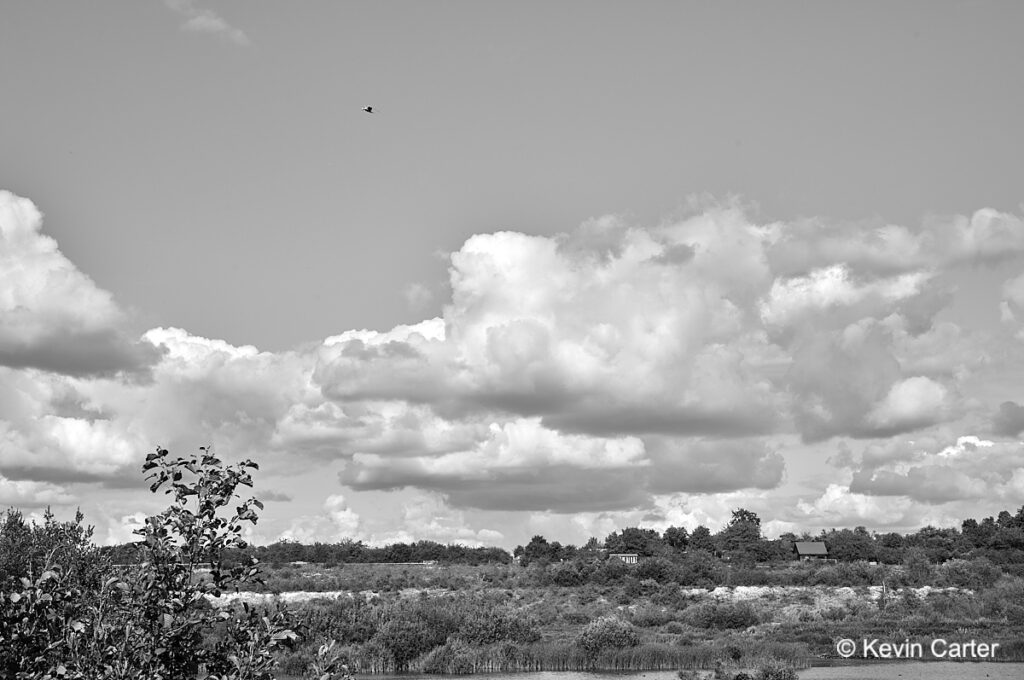

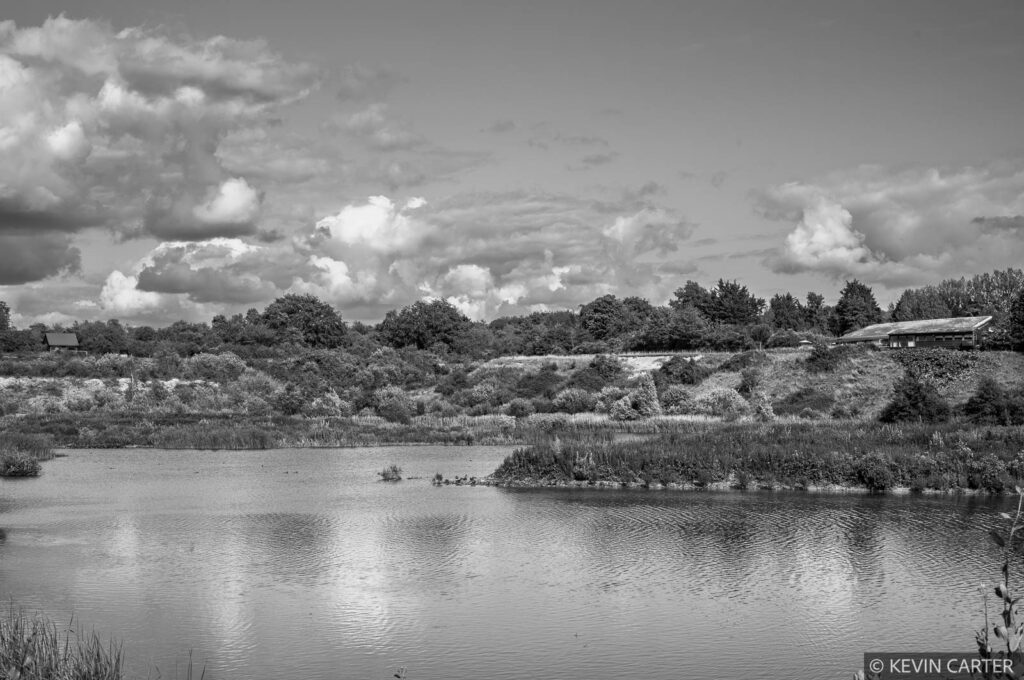
Final thoughts on the Leica M11 Monochrom
Leica continues to raise the bar with its latest Monochrom model, which isn’t really that surprising given how well-rounded the Leica M11 is. As I said in the M11 review, the Leica Ms are some of the simplest cameras to use. What I neglected to say is that they’re not very forgiving; you still need to know what you’re doing, and you need to have good technique. But once set up, the results can be breathtaking.
If you’re a novice, I recommend taking some instruction from Leica or buying a guidebook on the camera.
As I mentioned in my Leica M11 review earlier, I am not particularly in favour of the triple-resolution feature. Mainly, that’s because if you accidentally select the 18MP or 36MP option, there’s no way to revert to the native 60MP resolution, even when shooting RAW. That could compromise an important job. Besides smaller file sizes, there’s no real benefit (in theory, some slight gain in DR is possible, but it’s unlikely to be noticeable). It’s simply pixel binning, which you can do yourself in post with RAW anyway and likely with lower noise as a result.
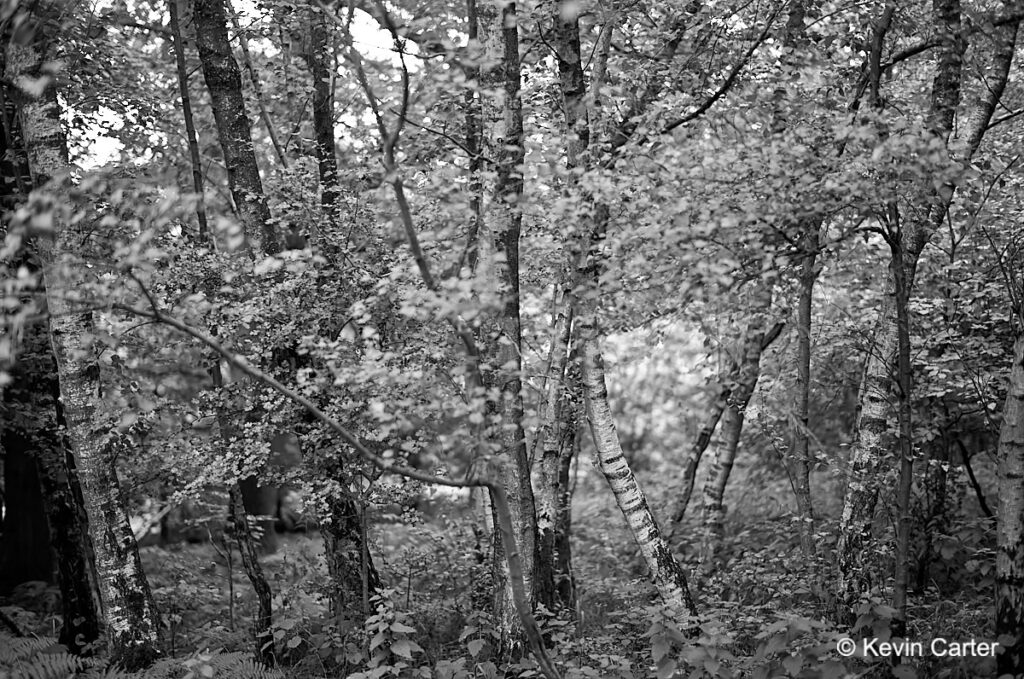
If you’re strict, you might find a way to work with it, using 60MP when conditions are ideal, 36MP for less than perfect and 18MP when all else fails. Full-size (native) RAW files vary between 50-70MB, dropping to around 16-20MB for the 18MP option.


That’s quite a bit less than the 80-90MB native RAW files from the Leica Q2 Mono, which has a lower-res 47.5MP sensor and suggests some compression is being applied already. What I would prefer to see in place of the triple-resolution feature is a lossless compressed RAW (DNG) option, ideally producing files in the 35-40MB range. For what it’s worth, the CR3 file from a Canon EOS R5, for example, is around 27-30MB from a 45MP sensor (without the dual-pixel feature enabled). When RAW file sizes are small, you don’t have to worry about using the native resolution. But I’m speaking as a RAW file advocate, I rarely, if ever, photograph in JPEG.
Photographing with the Leica M 11 Monochrom is an enlightening experience, evoking a sense of nostalgia for those who, like me, transitioned from film photography to the digital age. If you value exceptional black and white high ISO performance and appreciate the unique advantages of the Leica M rangefinder, then the M11 Monochrom is the ideal choice, finances permitting. Priced at around £8,300 inc VAT ($9,200 USD) for the body only, the M11 Monochrom may seem expensive, but it offers remarkable value with minimal premium over the standard colour camera. And when the time comes to trade, the Monchrome models retain exceptionally high residuals.
For those looking to invest in their digital black and white work, the Leica M 11 Monochrom is worth serious consideration.
Check stock and prices [affiliate links]
MBP (UK) (Used)
Read our review of the Leica M11.
Recommended v90-rated SDXC II card
Leica recommends SanDisk Extreme Pro SDXC cards (UHS-II – V90), check prices [affiliate links]


